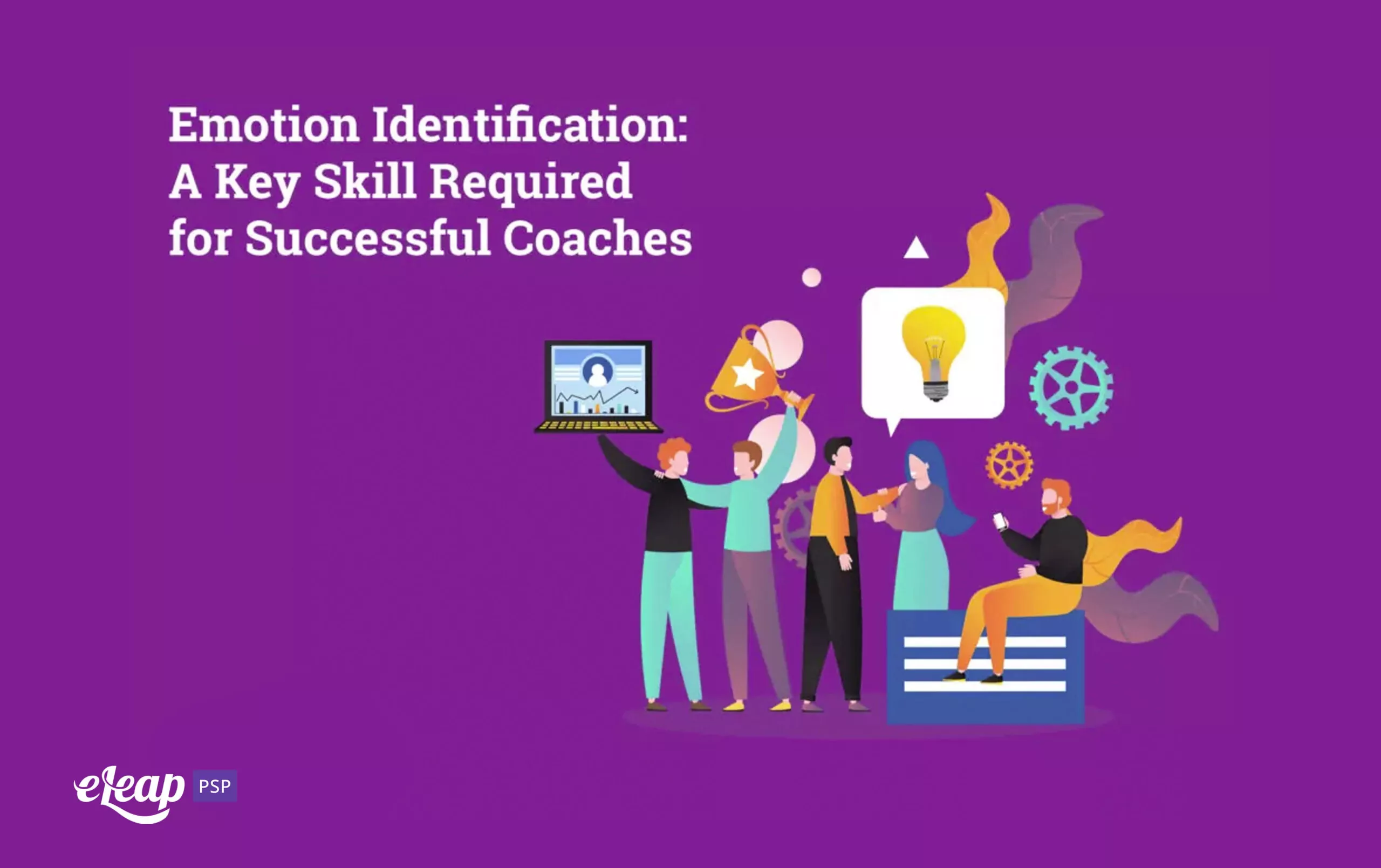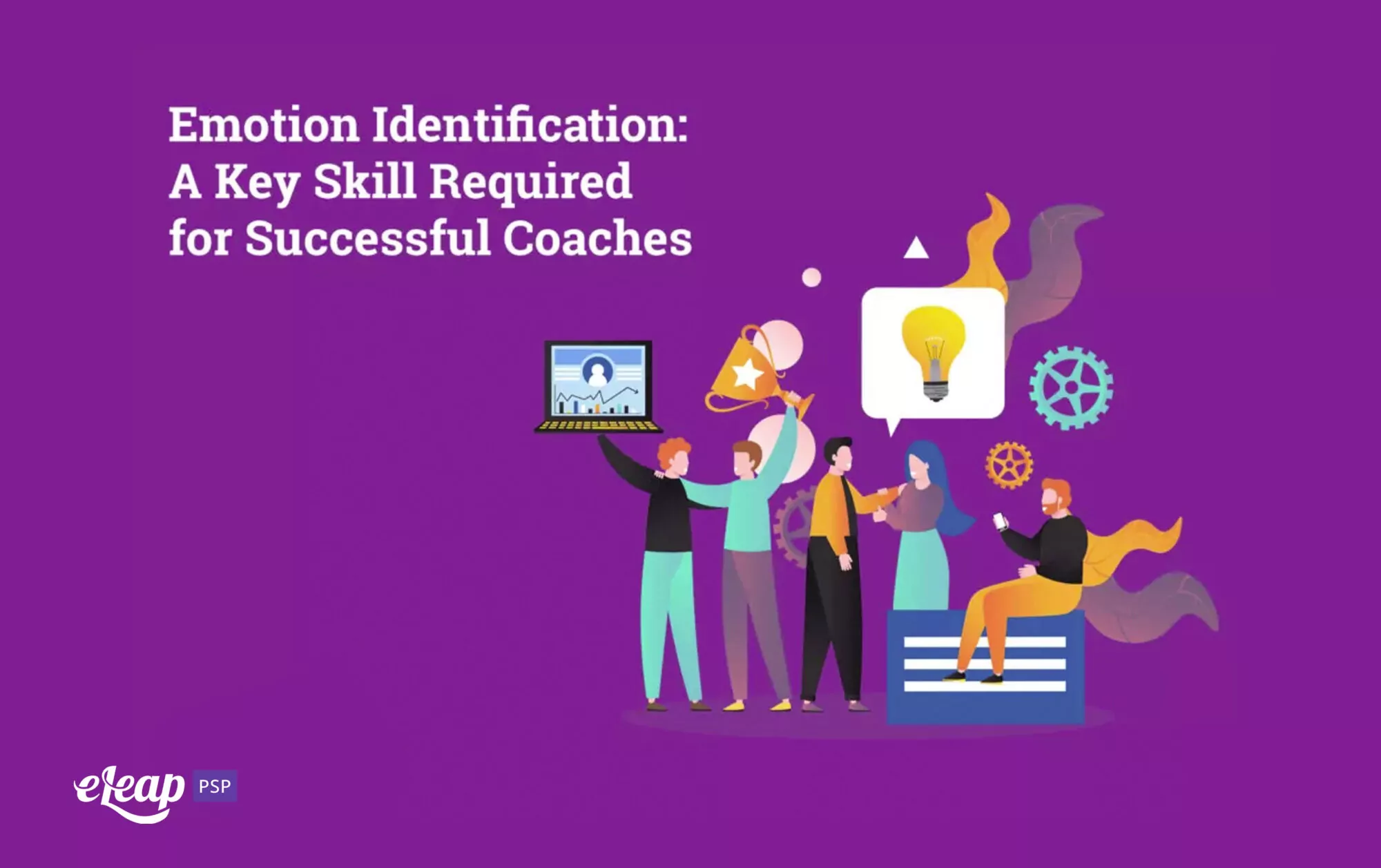Emotion Identification: A Key Skill Required for Successful Coaches

For managers to become coaches and move your performance management into the 21st century, they need to master a wide range of skills. They need to become adept at checking in with employees regularly. They need to move away from the carrot/stick mindset and towards one of innovation and communication. However, while those are important skills, one that often doesn’t get the attention it deserves is emotion identification.

What’s Emotion Identification?
Emotion identification, often called feeling identification, is exactly what it sounds like. It’s nothing more than the ability to analyze yourself (or others) and determine what you’re feeling by describing it precisely.
What’s the Use of Emotion Identification?
Cultivating this particular skill can offer a wide range of benefits, including building resilience into your life, allowing you to control how you show up each day, and even transform yourself from a position of surviving to thriving. The resilience gained can help coaches manage and navigate adverse situations, conquer challenges, and implement positive changes after a crisis occurs.
How Does Understanding Emotions Build Resilience?
The connection between being more resilient and understanding emotions might not be totally clear. It’s an interesting relationship, which we’ll explore in greater depth here. There is evidence from scientific research that being able to identify what you’re feeling not only helps you control it but to become more resilient in adverse situations of all types. Being able to not just name, but describe an emotion accurately, allows you to:
- Loosen its grip on you: When you can say “anxiety is in me”, you identify it and give yourself some breathing room and mental clarity.
- Take back control: When you can identify what you’re feeling, you can begin to control yourself, rather than letting your emotions control you.
- Normalize your feelings: When you’re aware of what you’re feeling, you can begin to reduce negative feelings and reintroduce positive ones through mental practice.
Now, imagine having those three capabilities during times of immense stress. Think about how much clearer your thinking would be, and how much better you would handle the situation. When you’re no longer at the mercy of your emotions, when you’re in control of yourself, and when you’re able to normalize your emotions, you can create a positive outcome in almost any situation.
However, like learning a new language, identifying your emotions requires time and practice. It’s not something you can do with any degree of accuracy right off the bat, at least not for most people.
The Challenge with Identifying Emotions
How many emotions can you identify when they begin to creep up on you? Chances are good you can identify happiness, but what about contentment? You’re probably able to identify anger, but what about annoyance? Can you identify when you’re feeling discouraged? When you feel hopeless? When you’re feeling anxious versus when you’re feeling panic?
This leads us into an interesting question – how many emotions are there? In classical thought, there were only six: happiness, sadness, anger, surprise, fear, and disgust. However, a quick look at that list should tell you there are many missing. Where’s anxious? What about hopeful? Love? Hate?
Interestingly, a study conducted in 2017 found that there were not six human emotions, but 27! That lends credence to the idea that we are only nominally a logical species. More, we’re a species driven by emotion, even if we’re not aware of what we’re feeling or able to put a name to the sensation in our minds and hearts.
The study also found that there were no “clusters” of emotions. Anger and hate didn’t live in a little group by themselves, while hope and love lived on the other end of the spectrum. According to the researchers conducting the study, “We don’t get finite clusters of emotions in the map because everything is interconnected”. There’s a gradient line between every emotion – no emotional state is an island, in other words.
Cultivating Emotional Granularity
The number of emotions and the rich emotional journey we all experience even if we’re not paying close attention, makes it incredibly challenging to determine what we’re feeling, much less someone else’s emotional state. However, cultivating the skill of emotional granularity – the ability to make fine distinctions between similar emotions – can help you guard against negative feelings, support positive ones, and do the same for other people.
When you’re able to understand your emotional journey, you can begin to understand other people’s emotions, the impact of those emotions on their decisions and actions, and more. In short, it allows you to become not just a leader, but a valuable coach who can build up your teams, encourage them to greater success, and, in turn, create a stronger, more resilient business.
This is particularly important as we’re still dealing with the lingering effects of COVID-19. Most of your team is probably still working remotely, and that can trigger many emotional issues. As a coach, you can help them overcome those issues. How, though?
- Name It: What is the team member feeling? Naming it will help them control it and loosen its grip on their mind.
- Reappraise: Isolation-related panic can be reframed in several ways, including spending more time with family, personal growth opportunities, and more.
- Distract: Find ways to distract attention from the emotion, and to refocus on positive emotions, such as meaningful goals.
- Ameliorate: Take proactive action that moves the employee down a path toward a positive outcome.
Becoming a Compassionate Coach
If there is one thing we’ve learned from the pandemic, it’s that we’re all in this together. When managers transition to coaches and learn the value of compassionate listening, they gain the ability to raise not just the other person, but themselves, and even the entire team. That begins with learning how to identify emotions and then building resilience in themselves, then working to help others do the same.